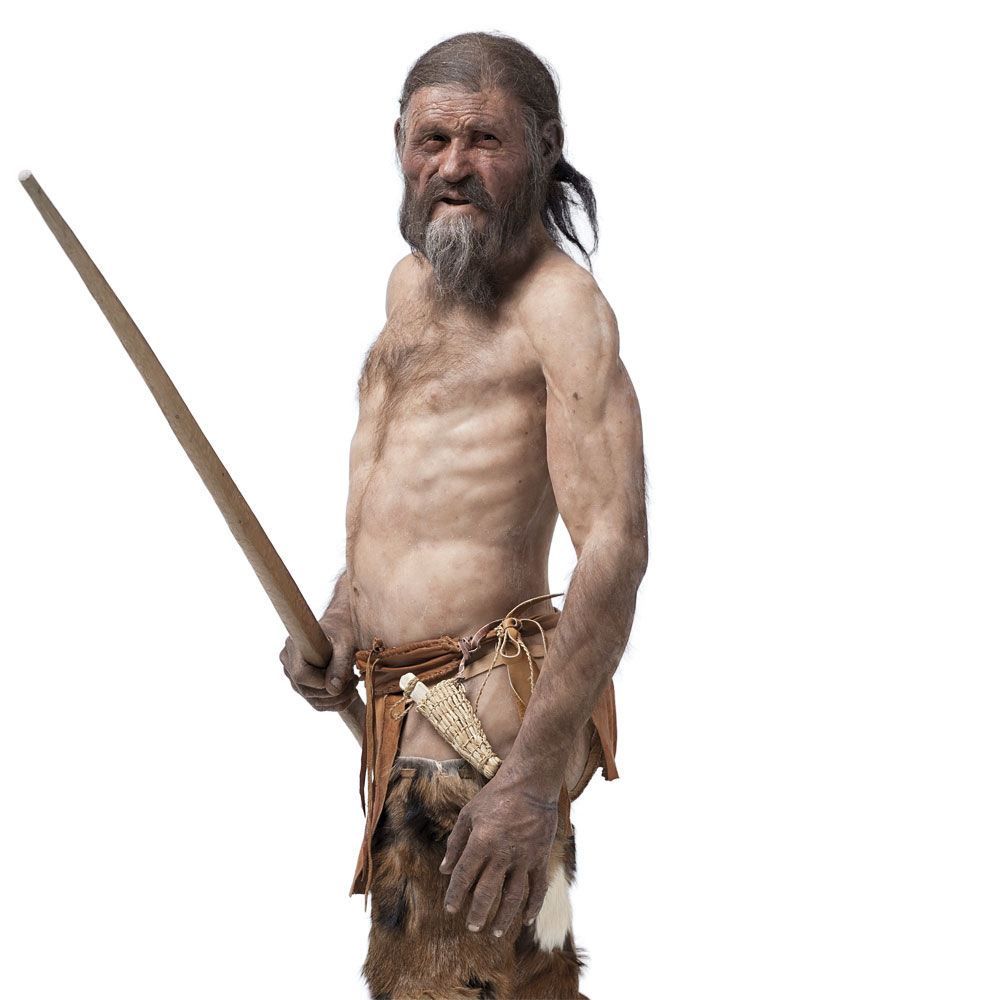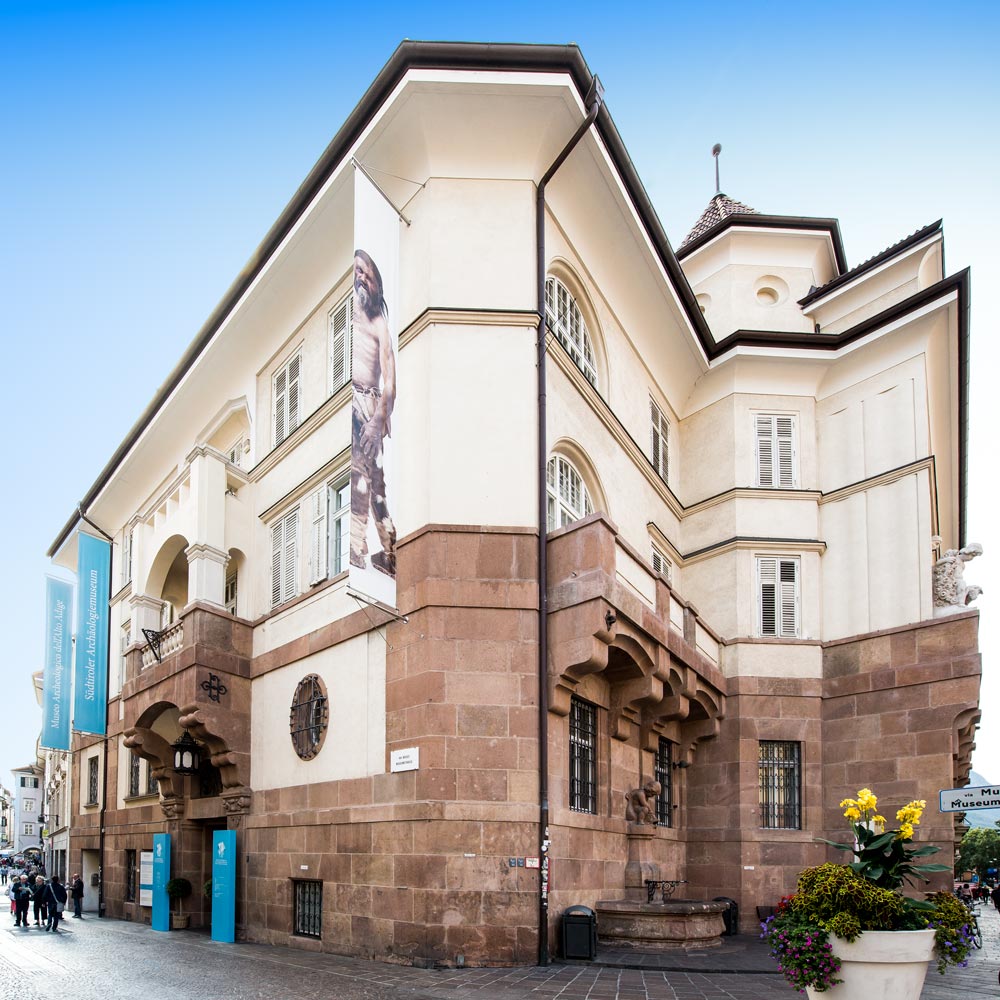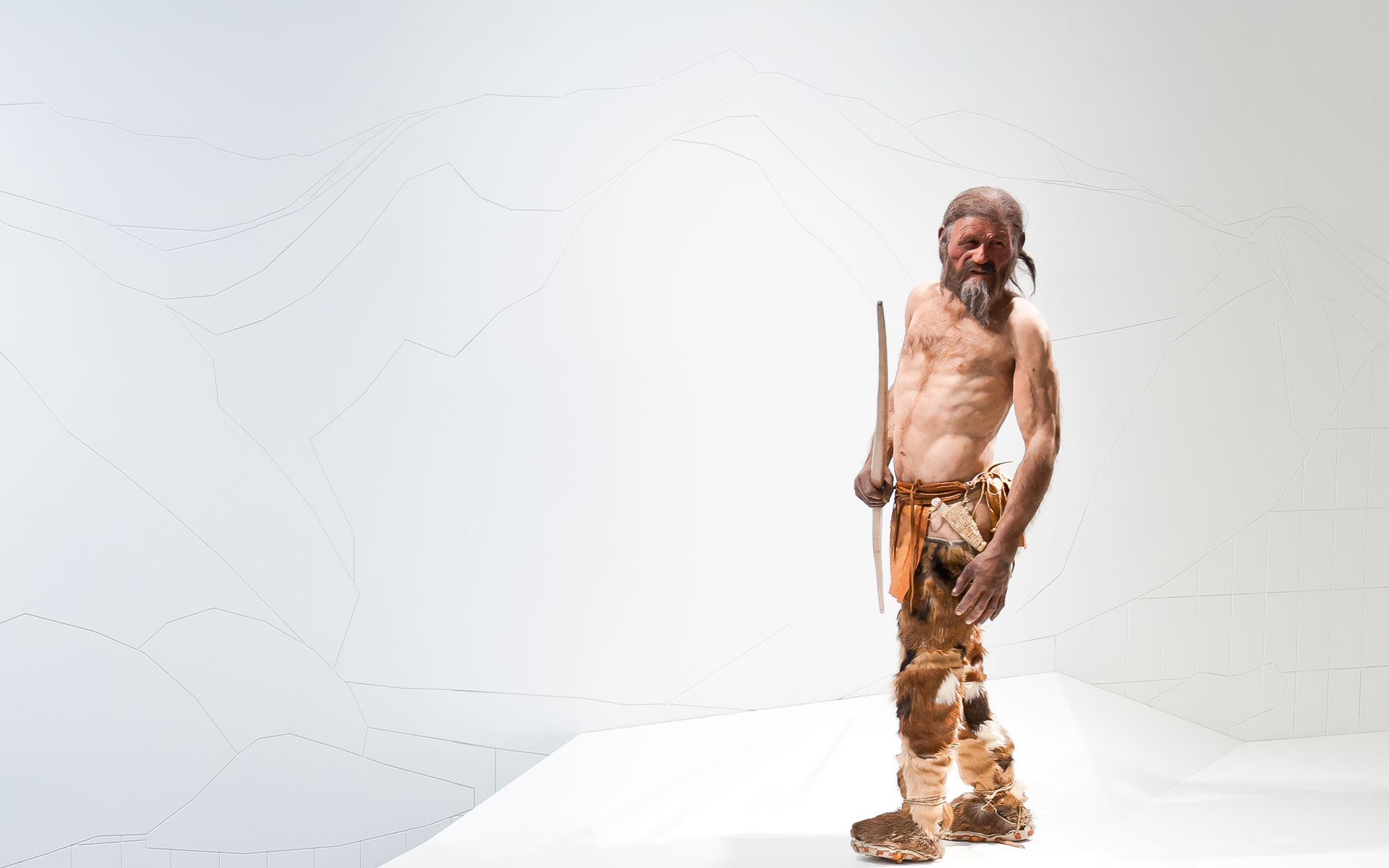
Ötzi the Iceman
Archaeologic sensation, media star, research topic, museum object:
Ötzi is a glacier mummy from the Copper Age, who, thanks to extraordinary circumstances, has been preserved down to the present day. Little by little, he has imparted genuine stores of knowledge. He was discovered accidentally by hikers in 1991, together with his clothing and equipment, on the Schnalstal/Val Senales Valley glacier and has been the subject of intensive research ever since.

A man from another era
Over 5300 years ago, Ötzi was crossing Tisenjoch/Giogo di Tisa in the Schnalstal/Val Senales Valley, South Tyrol, where he was murdered and preserved naturally in the ice.
He is therefore older than the Egyptian pyramids and Stonehenge and the result of a series of highly improbable coincidences. Ötzi lived during the Copper Age, a period of the late Neolithic. He was still using stone tools but owned an innovative and very valuable copper axe. The skill of extracting and processing metal had recently arrived in Europe from Asia Minor. The advent of copper marked the beginning of the Bronze Age.

Ötzi in the Museum
Ötzi and his artefacts have been exhibited at the South Tyrol Museum of Archaeology in Bolzano, Italy since 1998.
The mummy is stored in a specially devised cold cell and can be viewed through a small window. Ötzi’s numerous pieces of equipment and clothing have been painstakingly restored. Visitors have been amazed by the skills of Stone Age people. The mummy was dubbed Ötzi by the Austrian journalist Karl Wendl, who was looking for a catchy name. The name refers to the discovery site in the Ötztal Valley Alps.
The South Tyrol Museum of Archaeology belongs to the autonomous province of Bolzano and is associated with the South Tyrol Regional Museums.




